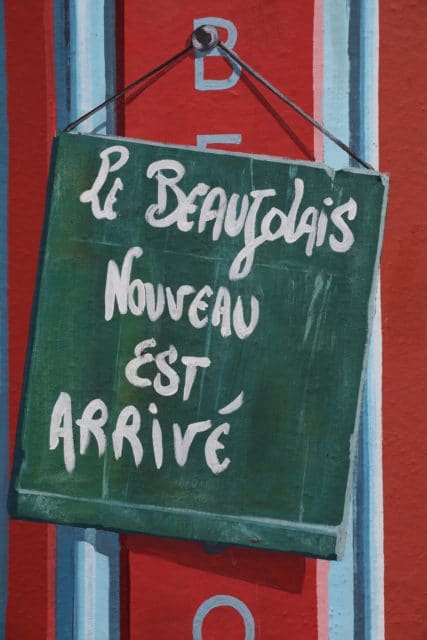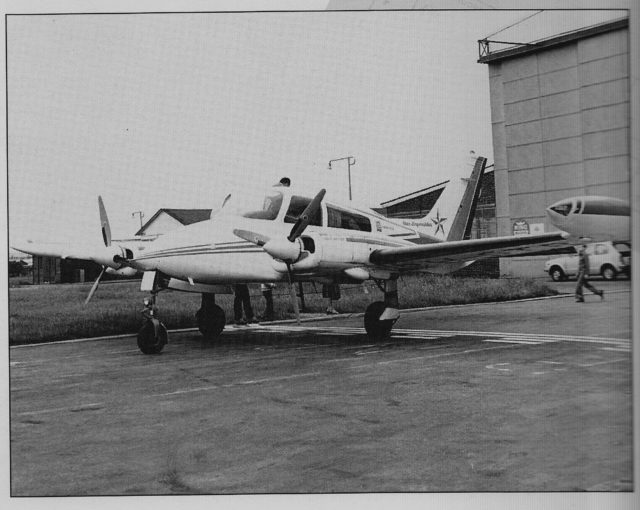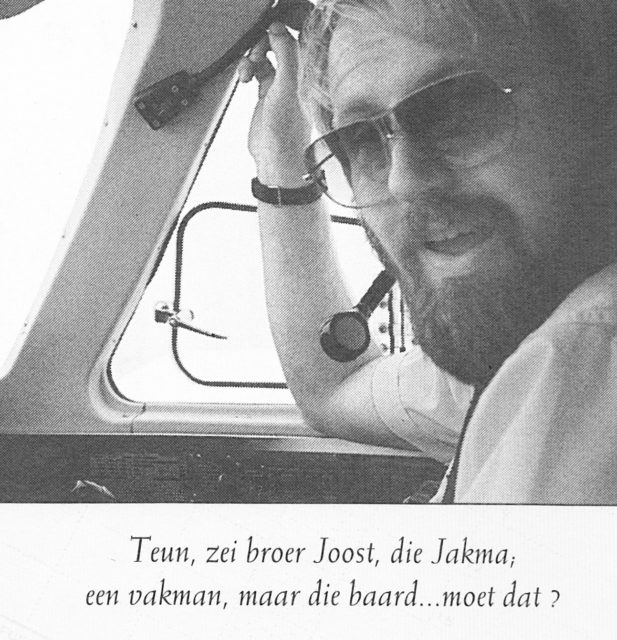Wine for the Soul
I’m thrilled to have another guest post by our very own Rudy Jakma! I hope you enjoy it as much as I have.
Wine for the Soul
by Rudy Jakma
You may have heard about the Beaujolais race?

The fruity wine from the Beaujolais region in the south of France is sold after a few months ripening as “Beaujolais Primeur”. The very first bottles are marketed as “Beaujolais Nouveau” and may be sold as early as November.
The release of this wine has become a marketing ploy with a sort of unofficial race organised to increase the name recognition for the Beaujolais wine.
It became an annual international contest, using fast cars and aircraft. The popularity of bringing the very first wine to an eager public by a race held by fast vehicles and aircraft lost its appeal after in 1984 a Turbo Commander, operated by Dublin-based Flight Line crashed near the British south coast with the tragic loss of all on board. The Commander was legally flown single-pilot. At the time, I was employed by Flight Line (the name has been adopted later by another company, there is no relation between them). It was company policy to operate with two pilots but, on request of the customer, the co-pilot seat was occupied by a passenger. Many years later I flew this type of aircraft myself. After a brief check-out I was sent on a delivery flight from Weston in Ireland to the USA where the plane was to be sold. I was warned by the owner that switching off the autopilot using the disconnect button on the flight control yoke would not result in any warning. I knew Jack Walsh, the pilot, as a competent airman. The investigation did not reveal any defect. It is assumed that the passenger in the co-pilot seat distracted Jack and accidentally disengaged the autopilot. Maybe there were other distractions too. It was a dark night. The aircraft was just making the transition from land with bright lights to over sea without a discernible horizon. Jack must have suddenly and without warning found himself in what is known as an “unusual attitude”. He may have overstressed the aircraft in an attempted recovery. The Chief Pilot, Tony Doyle, showed us print-outs of the ATC track. The transponder showed a rate of descent that rapidly increased from 500 feet per minute to more than 15,000. It is thought that by that time the wings may already have parted from the airframe.
I believe that the release of the “Nouveau” now is celebrated with a marathon.
In the mid-seventies, the Beaujolais race had become a popular annual event. Fast cars and aircraft were used and the “winner” could count on a lot of free publicity, courtesy the newspapers, TV and radio channels.
My employers, “Sterdisposables” were suppliers of plastics, but also cleaning material, napkins, placements and nearly every sort of disposable item used in the catering industry: by airlines, but also by hotel chains.

Sterdisposables of Amsterdam owned a Cessna 310, registration PH-STR, which they made available to participate in the Beaujolais race on behalf of the Apollo Hotel in Amsterdam. The idea was that we would fly to a small French airfield and have a meal (these small French airports usually hosted a flying club that served good to excellent local food) while we waited for the delivery of the boxes of wine and the arrival of Miss Beaujolais.
The Apollo would hold a party in the hotel to celebrate the first arrival of the wine, with of course the press in attendance.
We soon learned that we would compete with much faster participants in Learjets and Falcon 20 jets. The cruising speed of the Cessna was 180 knots; the jets could maintain 420 kts or more. A lost race already from the start? My boss set up a team, using the knowledge and connections of the hotel management.
The rule was that the wine would not be released until after midnight on the third Thursday in November. The race itself normally started from Lyon.
But the organisers of our flight had scrutinised the rules, that only stipulated that the wine was not allowed to leave the Beaujolais region before midnight. We used the rule to our advantage: We discovered a small airport just at the northern boundary of Beaujolais and paid them a visit. The management and the customs officials were willing to help. The wine for the other contestants would be released from the chateau at one minute after midnight and transported to Lyon. By using the regional airport, we could save the time it took for the wine to be transported from the chateau to the airport and loaded into the waiting jet.
On the day preceding the race, they would keep the airport open until just after midnight and the customs officials were willing to attend so that we could be released immediately. Miss Beaujolais and her minder were already there. The wine, a few cases that arrived well before midnight, were loaded. We took a few photos (one with me wearing the hat of the French “Douanier”) and with the blessing from the officials we were ready to take off at precisely 12:01 at and into the night.
This gave us a substantial head start. We were leaving the Beaujolais region shortly after midnight, when the vans with the wine for the jets were still on their way to Lyon Airport. But once in the air, these jets could cruise at rates of knots well over twice our cruising speed. It still was going to be a very close call.
When passing Belgium we were given weather reports that indicated that Schiphol-Amsterdam would be covered in dense fog. Our aircraft had fuel for over four and a half hours, London and even Copenhagen were well within range for a diversion, so even though Brussels and perhaps Paris would be fogged in, we were not worried and pressed on.
Approaching Amsterdam the weather reports were confirming the worst: dense fog. To bring Miss Beaujolais and the cases of wine to London or Denmark was not an appealing prospect, certainly not in the dark of night, so we kept going.
But luck was with us: When approaching Amsterdam suddenly a gap appeared in the fog. We made our approach and landed.
Now we had to overcome another problem. Schiphol, a major European airport, had closed. ATC was operational, but there were no customs. In the meantime some overzealous official had, without telling us, removed the wine and put it in the bonded stores. Without customs clearance it could not be released. The freedom of movement of goods that was the result of the EU did not exist yet.
But after more than an hour pleading and arguing someone, presumably in authority relented. The wine was released, we piled in two taxis that had to be summoned by the hotel where we arrived under loud cheers. The party had commenced already when the manager heard that the airport was closed due to fog and wine from the hotel cellars had made up for it. But the festivities re-commenced in earnest with the arrival of the “Nouveau” and Miss Beaujolais herself. Journalists heard our story and left to spread the news.
My wife and I were given a prize: we were invited to a dinner at a later date.
To my disgust, the following day the newspapers made no mention of our flight. Instead, they lauded an at the time well-known Dutch rally driver, Gijs van Lennep, as the heroic winner who had managed to drive his Porsche with a few cases of wine through dense fog that had started in the North of France, all the way to the Netherlands to be declared the winner of the “Beaujolais Nouveau” race.
Not one mention of the aircraft, even though a journalist of that newspaper, “De Telegraaf”, had been present in the Apollo Hotel.
Whether or not we would have been able to beat the jet set has not been determined, they either stayed at Lyon, awaiting better weather reports, or diverted. Actually, Schiphol Airport remained closed for hours, we had been the only aircraft that landed that night.
Of course I called the editor of the newspaper and challenged him on their inaccurate reporting. We had won the race by a very large margin, at least by seven or eight, if not ten hours.
The rather arrogant reply was: “Your name is not news, Gijs van Lennep’s is.”
We never got our prize, the dinner, either.

Thank you Rudy for taking the time to write this to share with us and also for scanning the original photographs!
-S








Maar de baard, moet dat? :D
D. Schmitt: The two photos came from a booklet that was published on the occasion of one my employers’ 40-year jubilee as an executive of the family-owned business called “Sterdisposables”.
The comment under the photo was from one of the brothers who ran the company, Joost (Joseph) Ritman, the CEO, to his brother Teun (Tony). Tony was a private pilot, 40 years working for the firm and responsible for the international sales. We spent a lot of time in that little Cessna. Tony was my employer and became a good friend.
The comment, roughly translated reads: “Tony, said brother Joseph, that Jakma, a pro, but that beard… is that really necessary?”
I still have a beard. In those days I was also, less flatteringly perhaps, known as “The flying Fidel Castro”.
Personally, I think I’d rather have a picture of “Miss Beaujolais”. Maybe that’s just me… ;-)
A friend of mine is a professional Dutch->English translator so I asked her for a translation of the caption that reflected it’s sense in English (rather than strictly literal).
“Teun,” Joost said to his brother, “that Jakma can fly with the best of them, but that beard… really?”
Jon,
Yes I agree with you. Sylvia decided to publish me, beard and all.
I moved several times after those photos were taken, unfortunately I lost the ones taken with the French police- and customs (with and without Miss Beaujolais).
She did not have a beard.
Sylvia, sorry, I think that my translation is better.
When I was in my twenties (in the 90s), “la fête du Beaujolais nouveau” used to be a big thing in Paris. Lots of people celebrating the event, on the third Thursday of November each year, in the cafés. It was an good excuse to go out with friends and overall something positive.
But what I realised later is that the wine sold on this occasion is of absolutely zero value. We still use to joke to these days whenever someone or the news mentions the Beaujolais Nouveau: “does it taste banana” ? Because that’s the kind of things the press used to say about the wine. And last time I checked (20 year ago at least), it really did taste like banana (which, for a wine, is already a quite discutable sensation), just not regular banana, but more like the artificially banana-flavoured cough medicine we used to take as a child. Yuck !
What’s quite unfortunate, IMHO, it that this whole marketing circus gives (or gave) a bad reputation to the Beaujolais appelation, even though there are other very interesting wines that come from the Beaujolais region (from which I happen to be from).
So if you’re interested in tasting real Beaujolais wine, I encourage you to try one of the 10 “Crus du Beaujolais” (Brouilly, côte de Brouilly, Chénas, Chiroubles, Juliénas, Fleurie, Moulin à vent, Morgon, Régnié, Saint-Amour), each one with its own personality.
Stefane is giving the “Fearless of reading about bad landings” community some great information about wine. So my recommendation is: Miss Beaujolais (pretty) or beard (not so pretty). It does not matter, get your summer wine and sit in your garden, on your balcony or on a terrace (when open again), have a drink and forget your sorrows.
If you are brave, have a Conona beer !